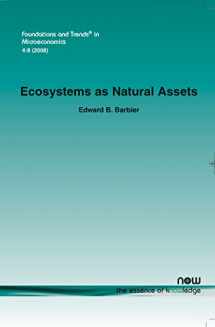
Ecosystems as Natural Assets
ISBN-13:
9781601982865
ISBN-10:
1601982860
Author:
Edward B. Barbier
Publication date:
2009
Publisher:
Now Publishers Inc
Format:
Paperback
86 pages
FREE US shipping
Book details
ISBN-13:
9781601982865
ISBN-10:
1601982860
Author:
Edward B. Barbier
Publication date:
2009
Publisher:
Now Publishers Inc
Format:
Paperback
86 pages
Summary
Ecosystems as Natural Assets (ISBN-13: 9781601982865 and ISBN-10: 1601982860), written by authors
Edward B. Barbier, was published by Now Publishers Inc in 2009.
With an overall rating of 3.7 stars, it's a notable title among other
books. You can easily purchase or rent Ecosystems as Natural Assets (Paperback) from BooksRun,
along with many other new and used
books
and textbooks.
And, if you're looking to sell your copy, our current buyback offer is $0.51.
Description
An important contribution of natural resource economics has been to treat the natural environment as a form of capital asset. The more recent literature on ecosystem services implies that these environmental systems can also be viewed as natural assets that produce a flow of beneficial goods and services over time. Ecosystems as Natural Assets explores this literature and related modeling to show explicitly how the concept of ecosystems as natural assets translates into the traditional "natural capital" approach of resource economics. In Ecosystems as Natural Assets, the author uses ecological landscape, or land area, as the basic unit, therefore modeling the ecosystem as a natural asset is relatively straightforward. The approach is to adopt a much simpler model of land use change. Chapter 2 discusses ecosystem services and ecological landscapes as the basis of representing ecosystems as a natural asset. Chapter 3 develops the basic natural asset model of an ecosystem by employing the competing land use model. Chapter 4 begins by returning the example of coastal landscapes and discusses ecological evidence that the basic functions of these systems are spatially variable. Chapter 5 revisits the basic natural asset model of competing uses of an ecological landscape and extends it to an open economy setting. Chapter 6 extends the basic model to consider the problem of ecological collapse, and shows that more of the ecological landscape will be preserved compared to when the threat of collapse is absent. Chapter 7 presents the conclusions.


We would LOVE it if you could help us and other readers by reviewing the book
Book review

Congratulations! We have received your book review.
{user}
{createdAt}
by {truncated_author}


